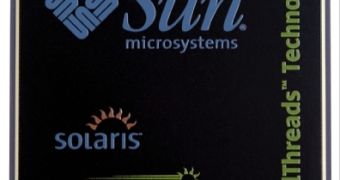Sun Microsystems is going to make public the eight-core UltraSPARC T2 processor specifications as part of their OpenSPARC initiative. The processor, code-named "Niagara 2" has been launched in August 2007 and is what the company calls "Sun's signature chip."
Sun is releasing the processor's specifications in order to create a community around it, and, therefore, increase the number of both operating systems and applications that can work together with their processor.
The company re-iterates one of their older experiences, that took place in December 2005, when Sun released the specifications for the UltraSPARC T1 processor. Its design and code have been downloaded and analyzed by 6,500 people, according to Shrenik Mehta, senior director for Fronted Technologies and the OpenSPARC Program at Sun.
"Open sourcing the UltraSPARC T1 processor design was such a new concept it created some angst and a fair amount of debate before we pulled the trigger", said David Yen, executive vice president of microelectronics for Sun. "But there was no debate associated with T2; we've seen the success of open sourcing hardware, and the interest it has created in the developer, university and customer communities."
The first processor specifications have inspired a plethora of other companies to develop new appliances. Among them, the Italian company called Simply RISC, used the processor's design to elaborate a single-core processor with a wireless interface for mobile devices.
"The goal when we released the UltraSPARC specifications in December 2005 was to create a whole new market and grow the ecosystem", Mehta said. "We wanted to make it easy and the easiest and best way to do this is to open it. There is a lot of interest in this technology, so why not share it and grow the pie."
Sun announced that five universities will become OpenSPARC Technology Centers of Excellence: the University of California at Santa Cruz, the University of Texas at Austin, the University of Michigan at Ann Arbor, the University of Illinois at Urbana-Champaign and Carnegie Mellon University. They will have to research chip technologies for a minimum period of two years, while teaching Sun's chip multi-threading (CMT) design.
"Thanks to the T1 design and other tools available to us through the Illinois Center of Excellence for OpenSPARC technology, faculty and students are performing research on processor reliability and architecture that would be impossible under any other scenario", said Josep Torrellas, professor of computer science at the University of Illinois. "For academics, this is an order of magnitude improvement in research tools. Computer architecture researchers everywhere should check it out."
Shrenik Mehta announced that the company is not going to publish the UltraSPARC T2 specifications only, but also most of the source code with the designs for the logic gate circuitry and the test suites. The company will have to keep secrecy of the algorithms approved by the National Security Agency as part of the chip's cryptographic acceleration units.

 14 DAY TRIAL //
14 DAY TRIAL //